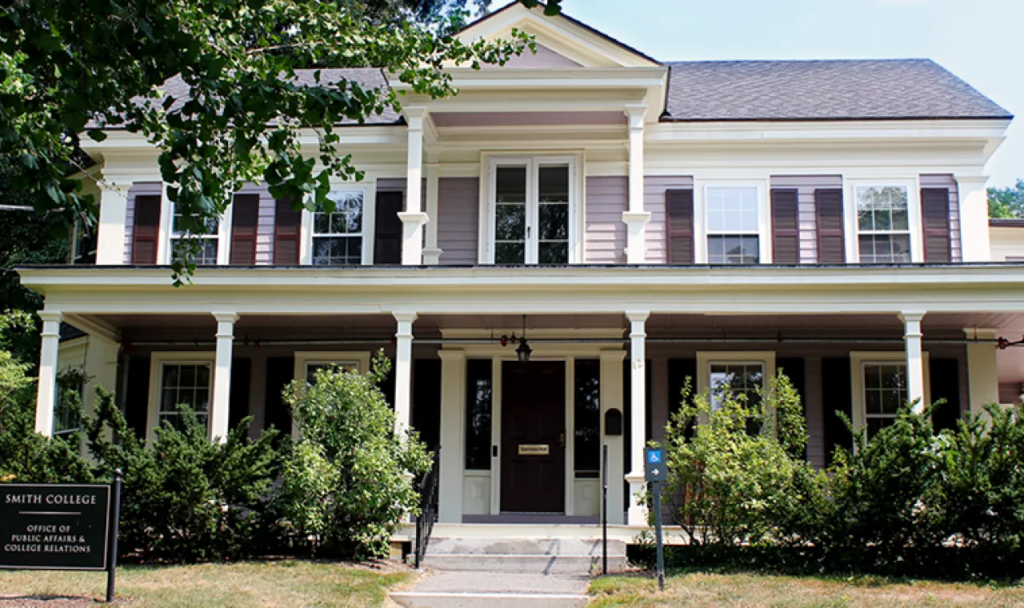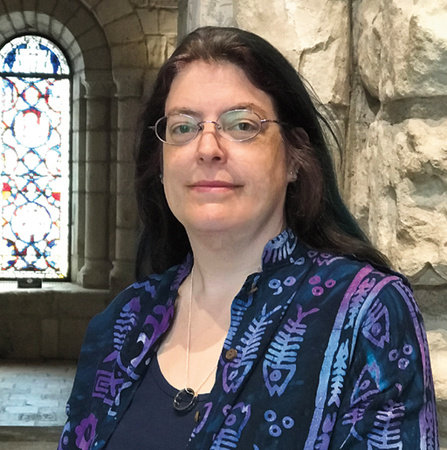
During the spring 2024 semester, Smith College Human Resources held a number of focus groups and action planning sessions that addressed the results of last year’s inaugural Employee Engagement Survey. I attended a focus group on career mobility where I was pleasantly surprised by the honesty and usefulness of the discussion. The Human Resources staff facilitating the session worked hard to capture an accurate record of what I and other staff members talked about–both the positive and the negative.
I came away from that session with a satisfying sense that staff voices were really being listened to. It made me curious about what this process would look like going forward into the next few years. To learn more I sat down with Vice President for Human Resources Anne-Marie Szmyt and Senior Human Resources and Workforce Analyst Lynn Cocco.
Staff Chronicle: Is there an overall name for this process that encompasses surveys, focus and action-planning groups, and subsequent changes and improvements?
Anne-Marie Szmyt: We’re calling this process “Engage. Inspire. Thrive.” We want people to understand we are not trying just to do a survey. The way we’re approaching engagement is multi-faceted and multi-year. We’re taking actions to improve things, and doing just as much work to make sure we are not losing ground where we are already strong. We want to provide employees with a regular, expected opportunity to provide feedback. The “inspire” part is something we were working to do with the all-staff gallery tour this year–to share stories of collaboration so employees could see what others are doing and say “we could do this, too,” or to inspire something totally new. And ultimately, the goal of the whole process is that we want to get to a point where employees can really thrive, where they can come to work and bring their whole selves.
In May of 2023, staff filled out the first Employee Engagement Survey. This academic year there were focus groups and action planning groups held as a result of that survey. Can you talk a little about the outcomes of the focus and action planning groups?
AS: At the all-staff meeting in December, we brought forward 4 or 5 themes we found in last year’s survey and used Poll Everywhere to capture the perspective of the people in the room. We distributed cards asking people whether they wanted to participate in a focus group or an action planning group, or both. Focus groups are more like chats, while action planning groups are looking more at what’s feasible from a practical standpoint.
The new format of this semester’s all-staff meeting (the all-staff gallery tour) is one outcome of those discussions. Another outcome is some improved benefits, including for employees going through gender affirming care and for people who are caring for elders. We’ve had additional conversations with more specific groups on campus, too–including faculty and service employees–and we will continue talking to stakeholders about what’s doable. Around September there will be a few new things we can announce that will be attributable to the engagement survey.
Staff filled out a second Employee Engagement Survey this spring. How was this year’s survey different than last year’s? What different kinds of information were you looking for, and why? How will it be used differently?
Lynn Cocco: There were not a lot of big changes this year because we want to start gathering year-over-year trend information and see how things are progressing and changing.
We did ask a few new questions, including “I saw action because of last year’s survey,” and a question about whether managers encourage employees to attend all-staff functions. That last one was something that came out of this year’s action planning groups. Another change we made was to the way we solicited comments. This year we opened up comments for each question, which makes it easier from our standpoint to categorize and analyze comments and turn them into meaningful data.
AS: Last year we were focused on building trust that the responses would be confidential and we did a lot of talking up front with faculty council, staff council, and other groups, assuring everyone of that. And we’re proud that we have had no concerns raised about confidentiality. This year we felt like people trusted us. In fact, we got around 3000 comments on this year’s survey. Last year the idea was to get everyone comfortable with taking the survey, and then this year we opened it up more so that people could really tell us what they are thinking about these specific topics. We want to see if there is a big swing in the pendulum on any questions, or whether themes have stayed consistent.
There were about 18 [focus groups or action planning groups] after last year’s survey, and there will be something similar for this year’s. The President’s team will see the results of this survey in May. One thing that’s new this year is that departments will get more department-level data, allowing for more local problem solving.
Next year we’ll take the hottest topics we learned about through the focus groups–pay transparency for instance, or the career framework–and ask more focused questions about those.
Have any results of this process been surprising to you? Satisfying?
AS: For me, what’s satisfying is the number of people who see how their work contributes to the mission of the college and who understand what they need to do to be successful–the feeling of being connected to something that’s bigger than you are. In my experience, those are things that are very hard to make exist if they’re not there already, so for us that felt like a great place to start. Colleagues at other colleges have said “wow, those are great numbers.” That is something we do not want to mess up!
LC: My husband worked in facilities for years, and we always got the sense that staff members feel they are here for the students, but to see that concretely in the data is really great. That was one thing that came out to me in the focus groups: how much people feel for the mission of the college and how much they associate what they do with that mission.
What can Smith staff expect for this process going forward?
AS: This is an iterative process where we’re always learning. There will be more focus groups and action planning conversations. The idea is that once we get to a list of “just do its,” we want to engage as many people as possible in coming up with solutions.
We are very open to feedback during this process. The message I would want people to know is that this is an all-employee initiative, not just an HR initiative. The reason for the surveys is that every person’s opinion matters to us. We wanted to make sure we weren’t making quick shifts because of anecdotal things we have heard, but instead using data. The message is that we do want to hear it–don’t just tell us what you like, tell us the things that can improve. If we all work together we’re stronger. I want people driving in to work and saying “there’s something about this college that I want to be a part of.”
LC: I agree, it’s all good information, positive or negative. We have new information from this year and in addition to that there’s still so much from last year that we are continuing to learn from. We plan to put out more communication about this and make it easy for employees to find. There will be a webpage so that people can see some of the data and see upcoming action planning topics. We want to be transparent about all this and we want to share the information.
